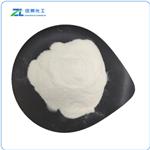- Benzisothiazolone
-

- $32.00/ kg
-
2025-04-15
- CAS:2634-33-5
- Min. Order: 1kg
- Purity: 99%
- Supply Ability: 5000kg/week
- BIT
-

- $0.00 / 25kg
-
2025-04-08
- CAS:2634-33-5
- Min. Order: 1kg
- Purity: ≥85%
- Supply Ability: 500 tons
Related articles - 1,2-Benzisothiazol-3(2H)-one(BIT)
- 1,2-Benzisothiazol-3(2H)-one, also known as benzisothiazolone or BIT, belongs to the class of organic compounds known as benzo....
- Apr 22,2022
|
| | 1,2-Benzisothiazol-3(2H)-one Basic information |
| | 1,2-Benzisothiazol-3(2H)-one Chemical Properties |
| Melting point | 154-158 °C(lit.) | | Boiling point | 360°C (rough estimate) | | density | 1.2170 (rough estimate) | | vapor pressure | 0Pa at 25℃ | | refractive index | 1.5500 (estimate) | | storage temp. | Keep in dark place,Sealed in dry,Room Temperature | | solubility | Soluble in dichloromethane, dimethyl sulfoxide, methanol. | | pka | 10.19±0.20(Predicted) | | form | Solid | | color | White to Light yellow to Light orange | | biological source | rabbit | | Water Solubility | 1.288g/L at 20℃ | | InChIKey | DMSMPAJRVJJAGA-UHFFFAOYSA-N | | LogP | 0.7 at 20℃ | | CAS DataBase Reference | 2634-33-5 | | EPA Substance Registry System | 1,2-Benzisothiazolin-3-one (2634-33-5) |
| | 1,2-Benzisothiazol-3(2H)-one Usage And Synthesis |
| Description | BIT (1,2-Benzisothiazol-3(2H)-one) is an irritant and also
a skin sensitizer. Occupational allergie contact dermatitis
has been reported mainly related to the use of
cutting oils and greases in paint manufacturers,
pottery mouldmakers, acrylic emulsion manufacturers,
plumbers, printers and lithoprinters, paper makers, an
analyticallaboratory, a rubber factory, and in employees
manufacturing air fresheners. | | Chemical Properties | Yellow Powder | | Uses | Isothiazolinone BIT is widely used in industry as a
preservative in water-based solutions, such as pastes,
paints and cutting oils. It exists at different concentrations
in the different Proxel AB, GXL, CRL, XL2, XL,
HL, TN, and in Mergal K-10. | | Uses | Antimicrobial agent. | | Definition | ChEBI: Benzo[d]isothiazol-3-one is an organic heterobicyclic compound based on a fused 1,2-thiazole and benzene bicyclic ring skeleton, with the S atom positioned adjacent to one of the positions of ring fusion. It has a role as a disinfectant, a platelet aggregation inhibitor, an environmental contaminant, a xenobiotic, a drug allergen and a sensitiser. It is an organonitrogen heterocyclic compound and an organic heterobicyclic compound. | | Application | 1,2-benzisothiazol-3(2H)-one (BIT) has been widely used in high concentrations for microbial growth control in many domestic and industrial processes, its potential eco-risk should be assessed. | | General Description | 1,2-Benzisothiazol-3(2H)-one is a commonly used biocide in industrial and consumer products, which possesses antimicrobial activity against gram positive and gram negative bacteria. It is mainly used in packaging, adhesives, detergents, disinfectants, sunscreen lotions, paints and lubricants. | | Flammability and Explosibility | Not classified | | Contact allergens | 1,2-Benzisothiazol-3(2H)-one, both an irritant and a skin sensitizer, is widely used
in industry as a preservative in water-based solutions
such as pastes, paints, and cutting oils. Occupational
dermatitis has been reported mainly due to cutting fluids
and greases, in paint manufacturers, pottery moldmakers,
acrylic emulsions manufacturers, plumber,printers and lithoprinters, paper makers, analytical laboratory,
rubber factory, and employees manufacturing air
fresheners. It is also a preservative in vinyl gloves. | | Safety Profile | Moderately toxic by ingestion.When heated to decomposition it emits toxic vapors ofNOx and SOx. | | Toxicity evaluation | Isothiazolinones, such as 1,2-benzisothiazol-3(2H)-one (BIT), are widely used as biocides for bacterial growth control in many domestic and industrial processes. Despite their advantages as biocides, they are highly toxic and pose a potential risk to the environment. BIT could seriously inhibit the growth of Scenedesmus sp. LX1, Chlorella sp. HQ, and Chlamydomonas reinhardtii with half maximal effective concentrations at 72 h (72h-EC50) of 1.70, 0.41, and 1.16 mg/L, respectively. The primary inhibition mechanism was the BIT-induced damage to microalgal photosynthetic systems. | | Toxics Screening Level | The Initial Threshold Screening Level (ITSL) for 1,2-benzisothiazol-3(2H)-one of 0.1 μg/m3 with annual averaging time is being rescinded. |
| | 1,2-Benzisothiazol-3(2H)-one Preparation Products And Raw materials |
|